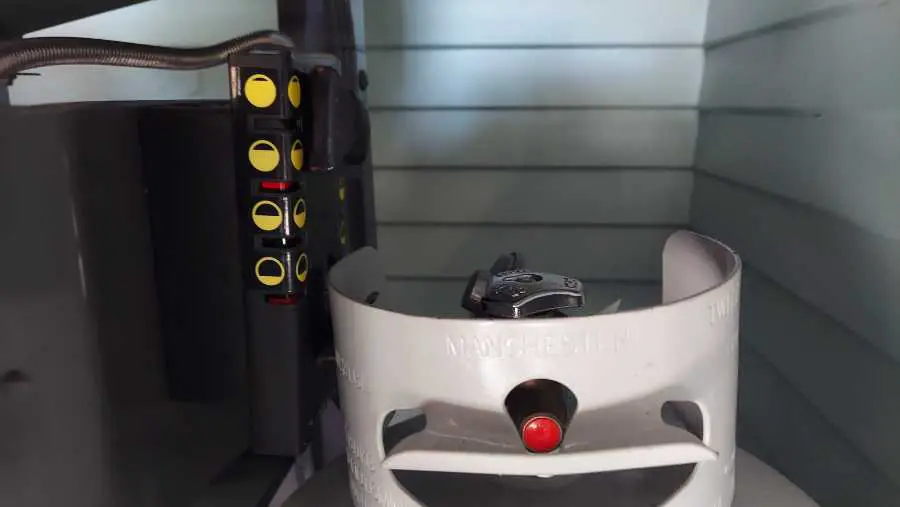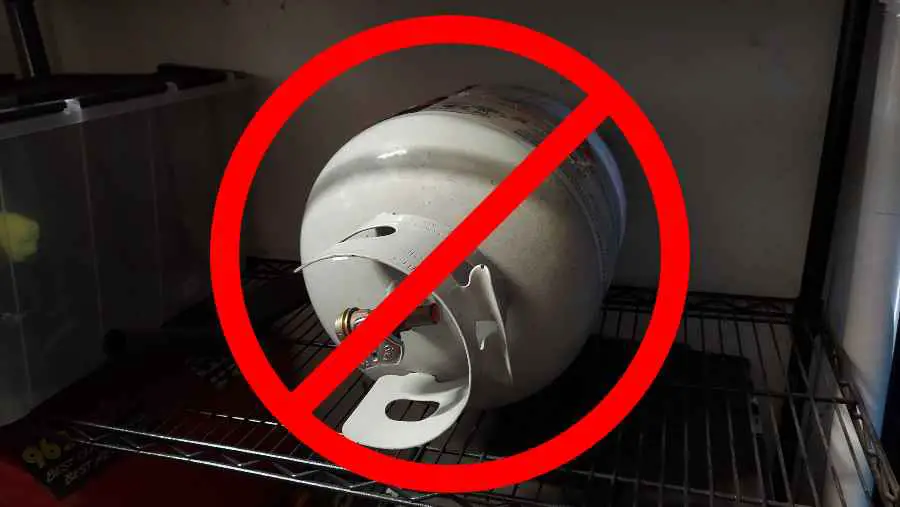Last Updated on May 23, 2024 by Dan Campbell
Is your propane tank not opening or are you experiencing issues opening the valve (also referred to as handwheel) on the top of your tank? Just filled your propane tank and it’s not working? Let’s go over some of the common reasons this happens and how to fix them.
Typically, if your propane tank valve is not opening, it’s because it was over-tightened or due to debris or rust it’s stuck. To fix a propane tank that won’t open, apply some oil, such as WD-40, to the valve stem and use a rag or rubber glove to get a better grip to open the valve. You should never use a wrench or tool to attempt to open a stuck valve, as this could possibly damage the valve. If you are unable to loosen the valve, you may need to replace the OPD valve or exchange the entire tank for a new one.
Let’s go over some of the common reasons your propane valve can get stuck, how to prevent this from happening, and other reasons your propane tank may not be working.
Fixing A Propane Valve That Won’t Open
As I mentioned above, the most common reason your propane tank valve might not open is likely due to it being over-tightened. However, other reasons such as debris or rust buildup, the valve being frosted over, and your tank being too old could cause issues with opening the valve.
Valve Is Overtightened
Whether your propane tank was overtightened the last time you used it, or came like that when you got the tank, you’ll just need to loosen the valve so you can open it.
Using a lubricant such as WD-40 or another type of oil, you can lubricate around the stem where the handwheel valve has threads going into the tank. Let it sit for about 10 minutes, then try opening the valve. If you still have issues opening the valve, try using a rag or rubber glove to get a better grip on the valve to open.
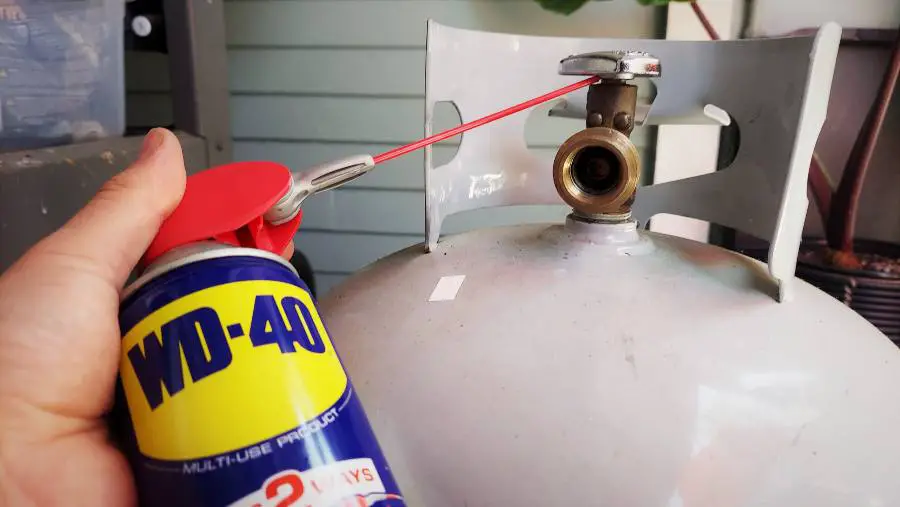
Never use any tools such as a wrench to try and force the valve open, and never use a hammer or other hard object to try and hit or “knock loose” the valve. If you damage the valve or break it, this could lead to serious injury.
Debris or Rust Build Up
If you live somewhere with a lot of dust or where it rains a lot, your tank may get covered in debris or form rust around the valve. If debris gets stuck in the valve threads, this could cause it to get stuck. Try using a rag with soapy water to clean around the valve, or using a hose to spray any dirt or grime off the valve stem.
Similarly, try cleaning off any rust to loosen the valve. Using rust removal spray can help break down any build-up allowing you to turn the valve. Depending on how severe the rust is, you may want to exchange the propane tank for a new one for safety reasons. Rusted propane tanks are not safe and should be carefully monitored for further damage and replaced as soon as possible.
Frozen Propane Valve
If you live in a cold climate there is always the possibility of water freezing around your OPD valve causing it to freeze shut. Try warming up the valve area with warm water, thermal hand warmers, or by using a hair dryer on its low setting.
Never use a torch or flame to try and melt ice on a propane tank, and never expose propane tanks to extreme heat. To prevent frost build up keep your propane tank valves covered and if you can, keep them out of the extreme elements as best you can.
Old Propane Tank
If your propane tank is old it can lock up as well. Propane tanks should be exchanged for a new one or recertified after 12 years of their manufactured date. You can locate the manufacturer date on the propane tank near the top, it will be represented by a 4-digit number such as “11 20”, which represents November 2020.
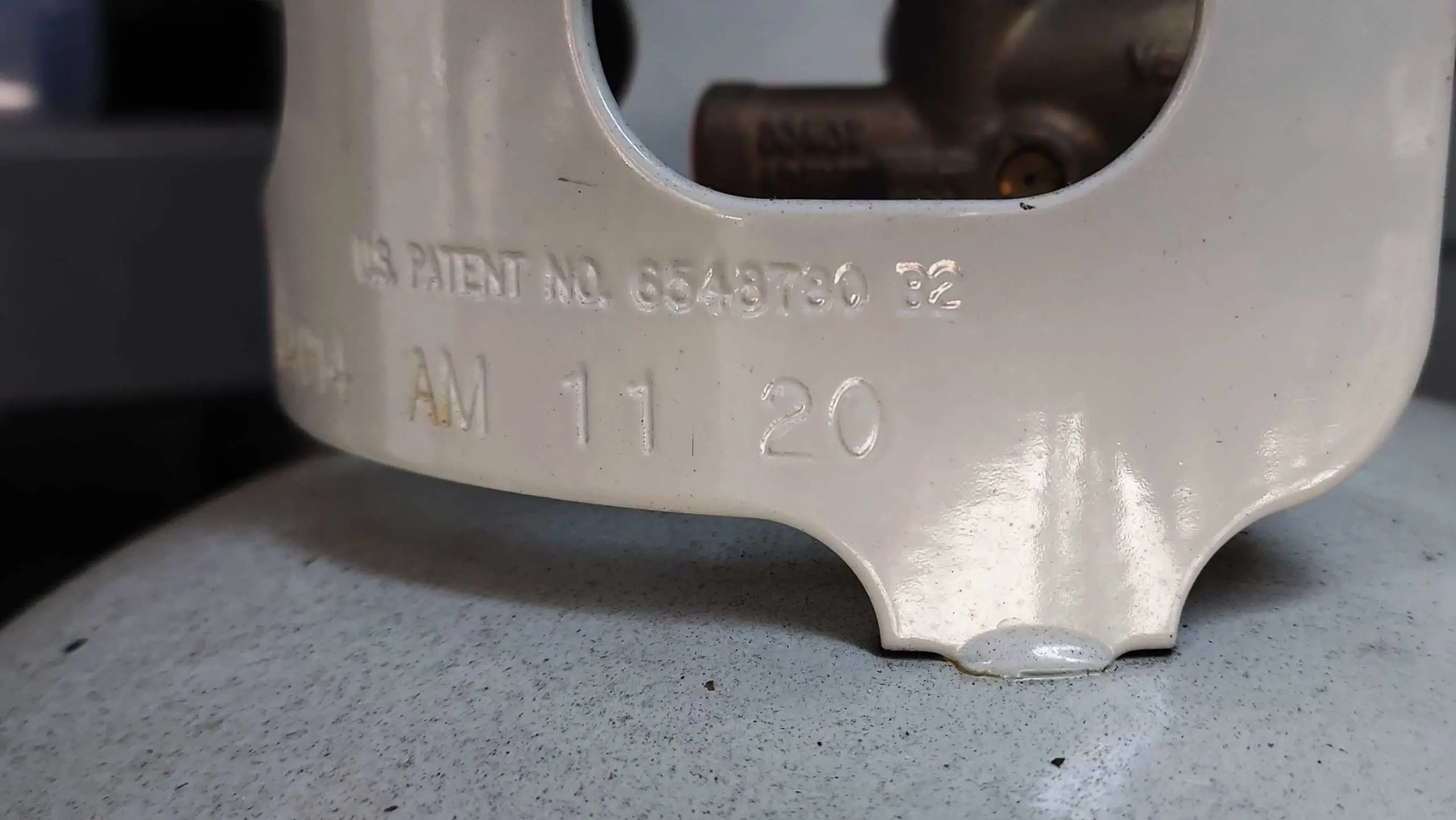
If your propane tank is older than 12 years of the manufactured date, you should have the tank exchanged for a new one. Read my article on how to dispose of propane tanks to see where and how to get a new one.
Propane Tank Valve Open But No Gas
If your experiencing issues with propane not coming out of your tank, there can be a handful of reasons why. Sometimes it can feel like your propane tank is full but no gas is coming out. This can be as simple as the propane tank actually being empty, or a safety feature has reduced the flow of propane. Most likely, if your propane tank is full and the valve is open, but you are not getting gas, it is because the regulator has triggered its low-flow safety feature.
Let’s go over how to figure out what the issue is and resolve any propane tank issues.
How to Check If Propane Tank is Empty or Full
The first thing to check if you’re having propane issues is that your tank is not empty. Refer to my article on how to check if your propane tank is empty, where I go into further detail on ways to check.
But the quickest way to determine how much propane is in your tank is to pour some warm water on the tank and feel for where the temperature changes. If this is near the bottom of the tank, chances are your propane tank is almost empty.
You can also place your propane tank on a scale to determine the total weight. An empty propane tank weighs around 18 lbs and when full, weighs between 33-38 lbs, depending on how full the propane supplier fills the tank. For example, Blue Rhino and Amerigas only fill 20 lb propane tanks to 15 lbs, see my article on how many gallons of propane are in a tank to read more on this.
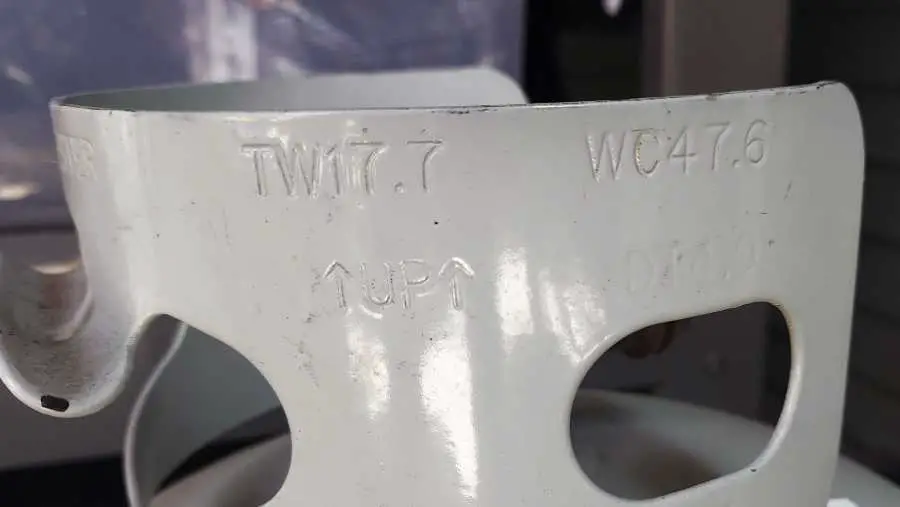
Your propane tank will have its tare weight listed on the neck ring, near where the manufactured date is. Typically it’s 17.7 lbs. So you can simply weigh the entire tank and deduct the tare weight to calculate how much propane you have.
Propane Low Flow Safety Features
If your propane tank is full, and you are able to turn the valve on, but you are experiencing issues with a weak flame, low flame, or your appliance isn’t working properly or even starting, there is a chance one of the safety features has triggered.
All regulators have an overflow protection mechanism that triggers if an excess flow of propane is detected. Sometimes you can accidentally trigger this and until you reset the regulator you won’t have an adequate flow of propane.
If your propane tank shuts off during use, chances are you have a leak, something is wrong with your appliance, or a connection is loose. If there is a leak, it will cause the regulator to restrict flow to the appliance and activate a “low-flow” mode. When this is triggered, propane is not fully restricted, but the flow is dropped significantly to give you time to turn off the propane tank and fix the issue.
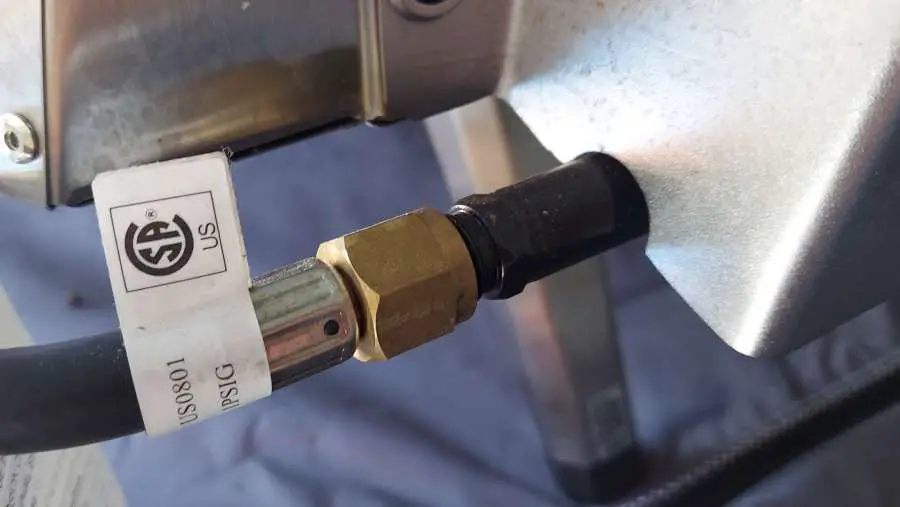
To fix an issue where the low flow safety features have triggered, which can be identified by hearing an audible “click” come from the regulator, and weak or low flames, you’ll need to reset the regulator. If you notice this continually happening, you should first turn off your appliance and propane tank and examine your setup for signs of damage.
Check for Damaged parts
Damage to the propane tank, valve, regulator, hose, or appliance can cause issues with your propane tank not working properly. While it may seem common knowledge to look at your propane tank for signs of damage, since that is what typically moves around the most, it’s important to also look at the connections between your propane tank and regulator, as well as the hose and regulator themselves.
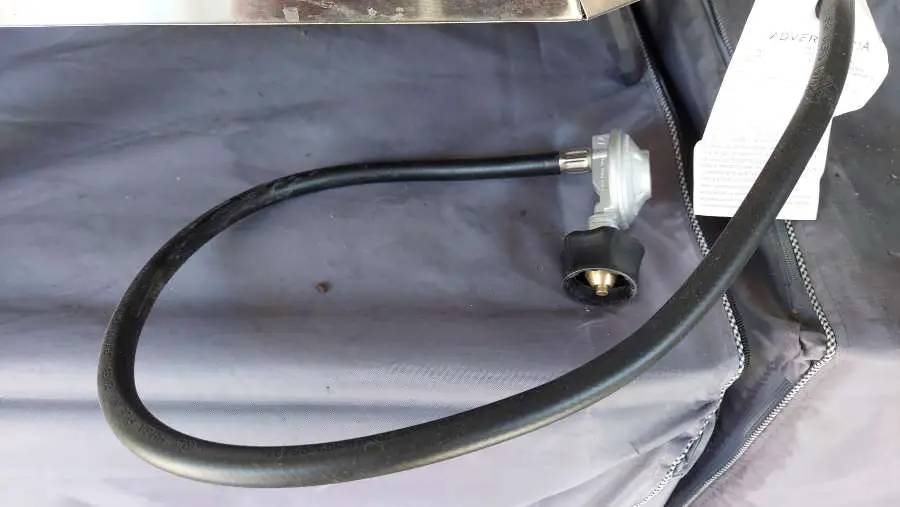
Even though you may not have touched these pieces, extreme weather and time can affect the rubber parts of regulators and hoses. Inspect the inside of the connection between your regulator and valve for any broken O-rings, as well as signs of rust or cracks.
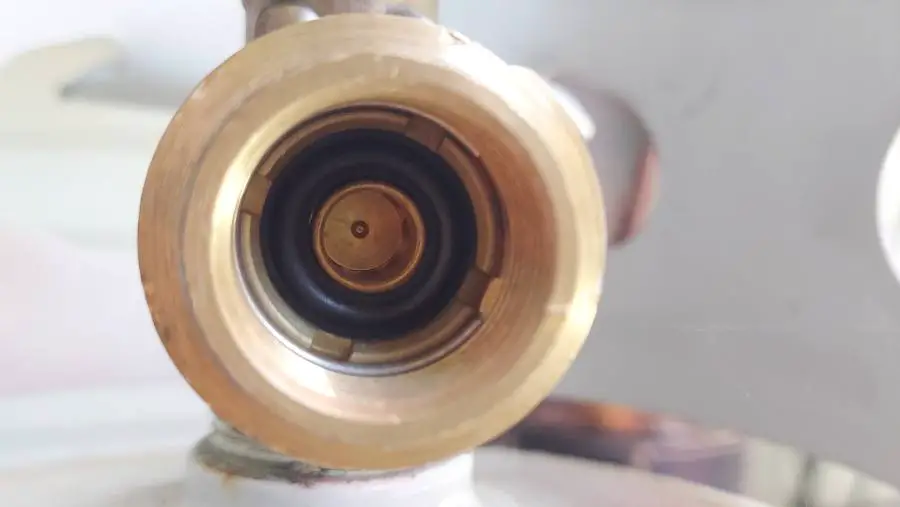
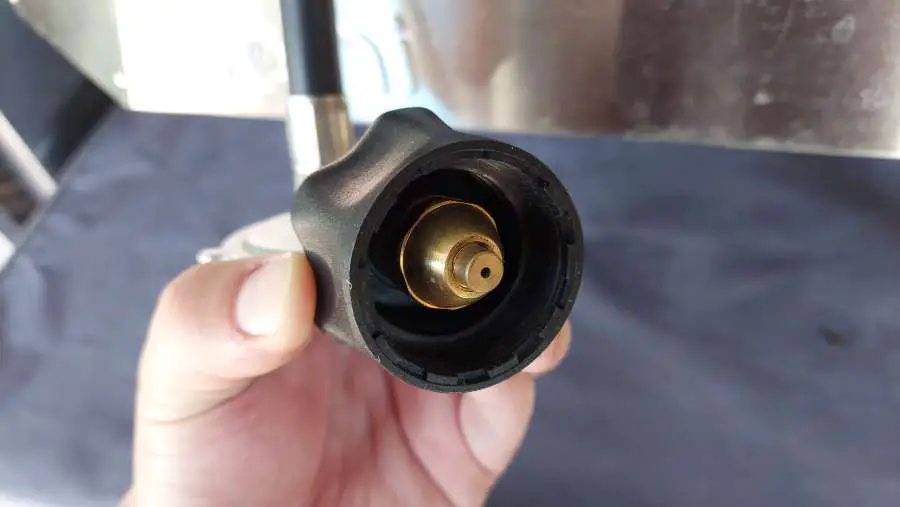
Animals and insects are attracted to the scent of propane and can bite through propane hoses, and even after you turn a propane tank off the hose between your appliance and regulator still contains propane. If an animal were to create a small hole in the hose, it could be what is accidentally triggering the low-flow safety feature.
Resetting Your Propane Regulator and Connections
If you’ve triggered the low-flow safety feature in your regulator you’ll need to reset it to fix this issue. As I mentioned above, this can easily happen and sometimes you may not notice you’ve done so, causing you to experience weak or low flames, or have your propane tank shut off during use. This can easily happen the first time you install a new appliance or regulator/hose as the hose is empty, and when you open the propane valve an excess flow of propane enters the system. Your regulator may think you have a leak and restrict the flow of gas.
To reset a propane regulator follow these easy steps:
- Turn off the appliance and close the propane tank valve fully
- Disconnect the appliance regulator or hose from the propane tank
- Reconnect the regulator/hose to the propane tank
- While the appliance is still off, slowly turn the propane tank valve on
- Turn on the appliance
When operating any appliance with propane, you should always first turn the propane tank on before turning the appliance on. And when you’re finished, you should always turn the appliance off first then the propane tank. This will ensure you do not accidentally trigger the low-flow safety features.
How to Prevent A Stuck Propane Valve
By properly maintaining your propane tank you can avoid having your propane tank valve get stuck later. Proper maintenance and storage are key to safe propane use and will help you avoid running into issues with the tank.
Propane Tank Maintenance
Maintaining your propane tank can be as simple as routinely checking the tank for signs of damage, keeping your propane tank clean from debris and dirt, and ensuring your propane tank is full.
Any signs of damage to your propane tanks such as rust, corrosion, dents, or broken/missing parts mean you should get a new propane tank. Propane tanks are typically white to allow them to reflect the most amount of light to reduce how hot they get, so it is important to keep your propane tanks clean so they can stay cool. Similarly, having a full propane tank allows the tank to maintain temperature better, and reduces the chances of pressure dropping too much in cold weather.
Propane Tank Safety and Tips
Propane is one of the safest residential sources of fuel, since it is clean burning, has an indefinite shelf life, is stored in extremely protective tanks, and can only be used when the correct connection is made. However, propane is extremely flammable and you should always practice caution when handling or using propane.
Always:
- Always keep propane tanks vertical
- Always check your connections for signs of damage or leaks
- Always store and use propane tanks outside in well-ventilated areas
- Always have your LP systems checked regularly, especially when used for homes and RVs
Never:
- Never smoke near propane tanks or have them around open flames and ignition sources
- Never use tools to tighten the connections on propane tanks, or try to adjust the OPD valve
- Never use propane indoors or use propane heaters while you sleep
Propane Tank Storage
Propane should always be stored outdoors and in a well-ventilated area, as well as stay somewhere cool and shady. When propane tanks are overheated, they can build up pressure and potentially open the safety relief valve causing propane gas to spew out. If you live in an area that experiences snow or rains often, consider buying a cover for your propane tank to keep it out of the elements.
When not in use, propane tank valves should always be fully closed. Never store propane tanks near open flames or sources of ignition, and if your propane tank comes with one, cover the service valve when not in use.
Replace Your OPD Valve or Propane Tank
If you’re unable to turn the valve on your propane tank by following these tips, unfortunately, you will need to have your valve or tank replaced. If your valve is stuck on a smaller-sized propane tank, it is recommended to have the whole tank exchanged. However, for large household-sized tanks, you’ll want to reach out to your propane supplier to get information on having a new tank valve installed or having a technician come take a look at it.
Take a look at my article on how to dispose of propane tanks for more information on how and where to do so. Depending on the size, as well as your location, you may be able to simply leave it at a propane tank exchange cage or you’ll need to contact a hazardous waste site or local propane supplier.
Hopefully, you found this content helpful, if you have any questions or comments please feel free to reach out.
Thanks for reading and God Bless!

